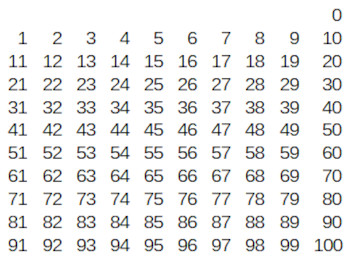
Automtically Ordering a List of Numbers
A brief description on how to take a list of numbers and order them from least to greatest or greatest to least.
How to Order a List of Numbers
The goal of this post is to show you how to take a list of integers and order them from least to greatest or greatest to least by using a for loop. This same idea will work for other programming languages. You will just have to change the syntax to match whatever language you decide to use. In the example I will be doing, I will be using Python and ordering the list from least to greatest. I know that Python has a sort function that can do this for you, but this will help with other languages and if there is a case where the built in function does not work. It is also helpful to have an idea what is going on underneath the hood of these functions.
-
You need a list of unordered integers (if you are using a different language or structure, this will work as long as it is iterable)
x = (6,1,7,8,3,2)
-
Now you will want to initialize the for loop to the length of the list.
for i in range(len(x)):
-
Next you will want to create a nested for loop that starts one iter ahead of the outside loop.
for j in range(i+1, len(x):
-
This is where you want to start checking whether a one value is bigger than the next. To do this, you check if the value at x[i] is bigger than the value at x[j]. It will keep going until it finds values that trigger the if statement.
if x[i] > x[j]:
-
Inside of this if statement is where the swapping of values occurs. If x[i] is bigger than x[j], you want to swap the values. To do this, you need to store one in a temporary variable, change that value to the other indexed values, and then use the temporary variable to change the other index.
y = x[i]
x[i] = x[j]
x[j] = y
These are all of the steps that you need to sort the list. When you put them all together, it looks like this.
for i in range(len(x)):
for j in range(i+1, len(x)):
if(x[i] < x[j]):
y = x[i]
x[i] = x[j]
x[j] = y
If you desired to turn this into a function, it would be very easy. All you would have to do is add a line before with the function name and add that it takes a list an input.
def function_name(list_name):
Also, if at the end of this function you wanted to add a print feature once the list has been sorted, you would just add print(list_name) in the last line outside of the for loops. Following these steps will sort the list. To do this but reverse the order, you would just change the greater than to a less than in the if statement. This is not the only way to sort a list of unordered integers. There are other ways using a loop and ways without. This is just one of the simplest ways to do it. One instance where this becomes useful is when you have a program where someone else inputs numbers and the output should be sorted or when you just have a large list of numbers that would take too long to sort as you are inputting them. By having a sorted list, the data becomes easier to read and is much more visually appealing than if the numbers were just in a random order.